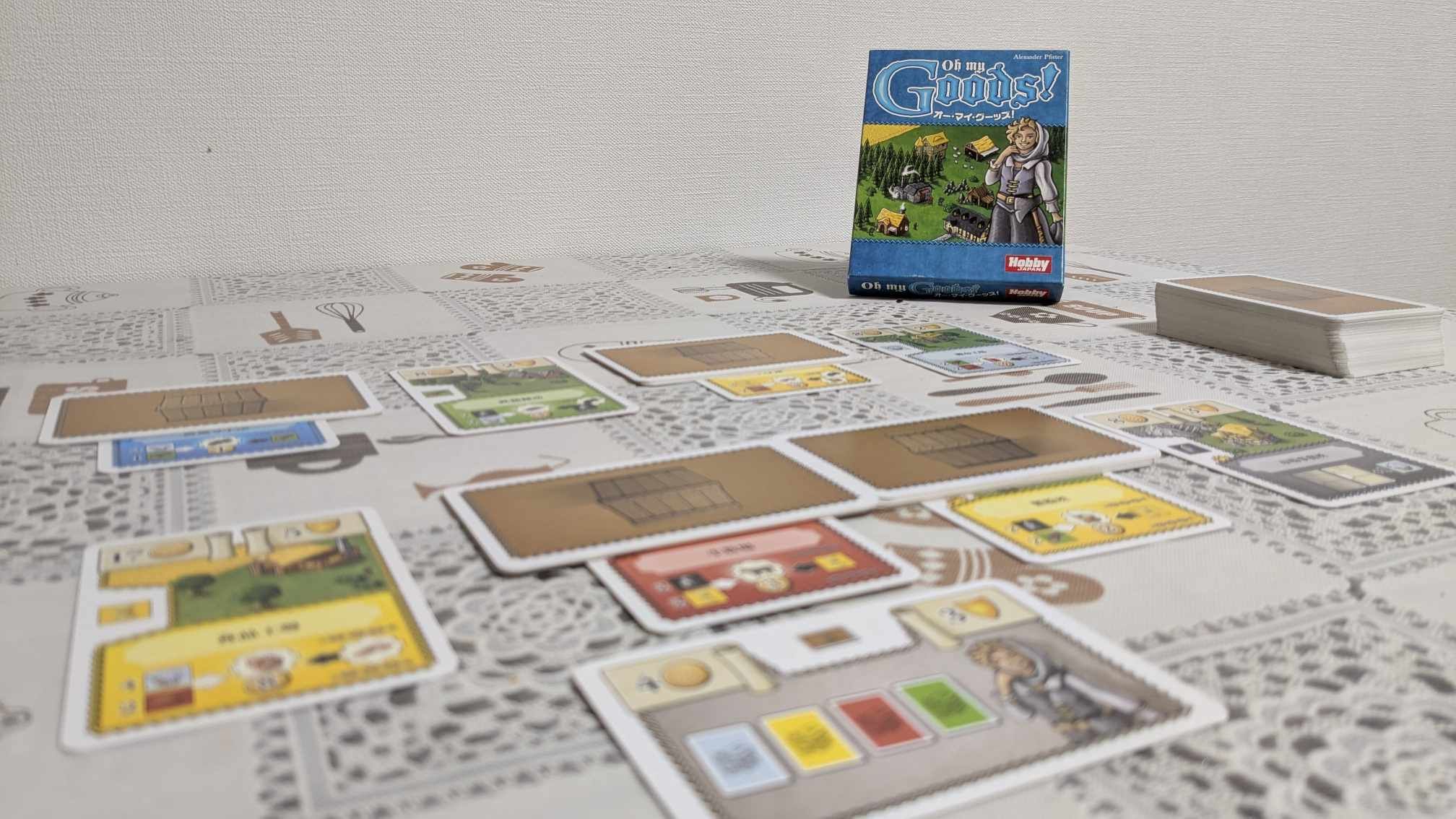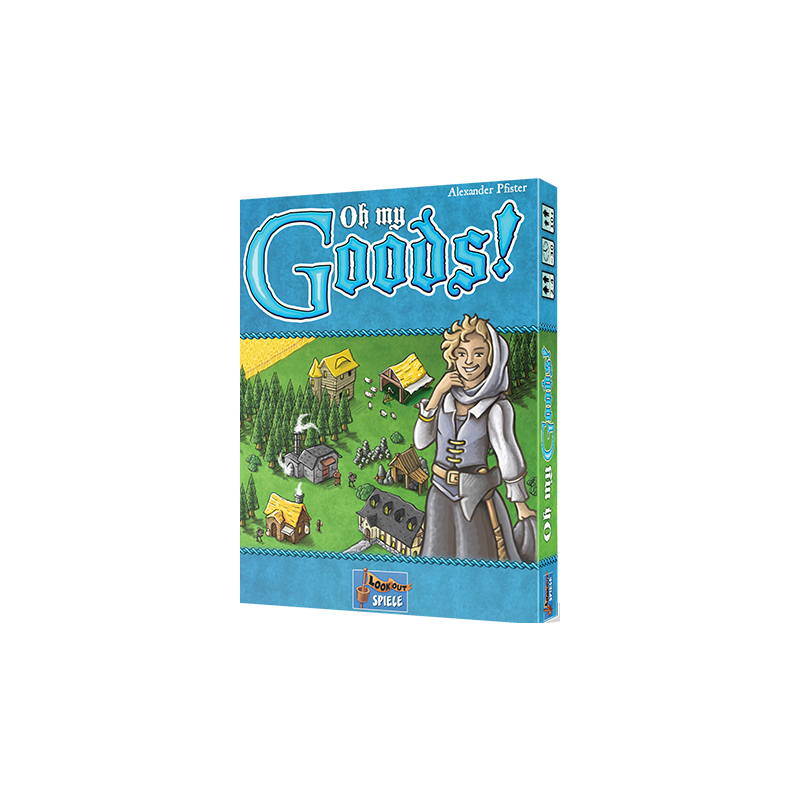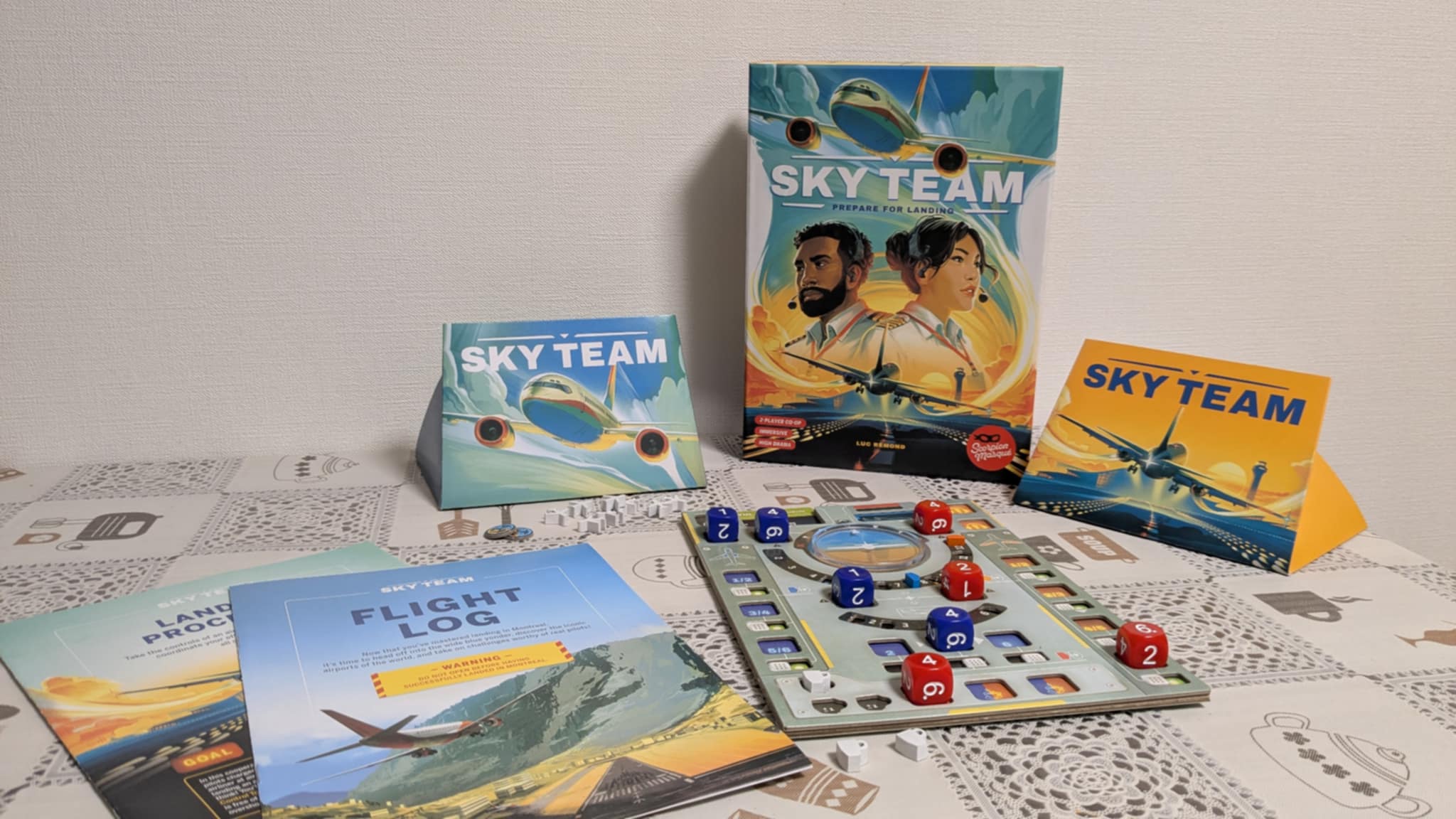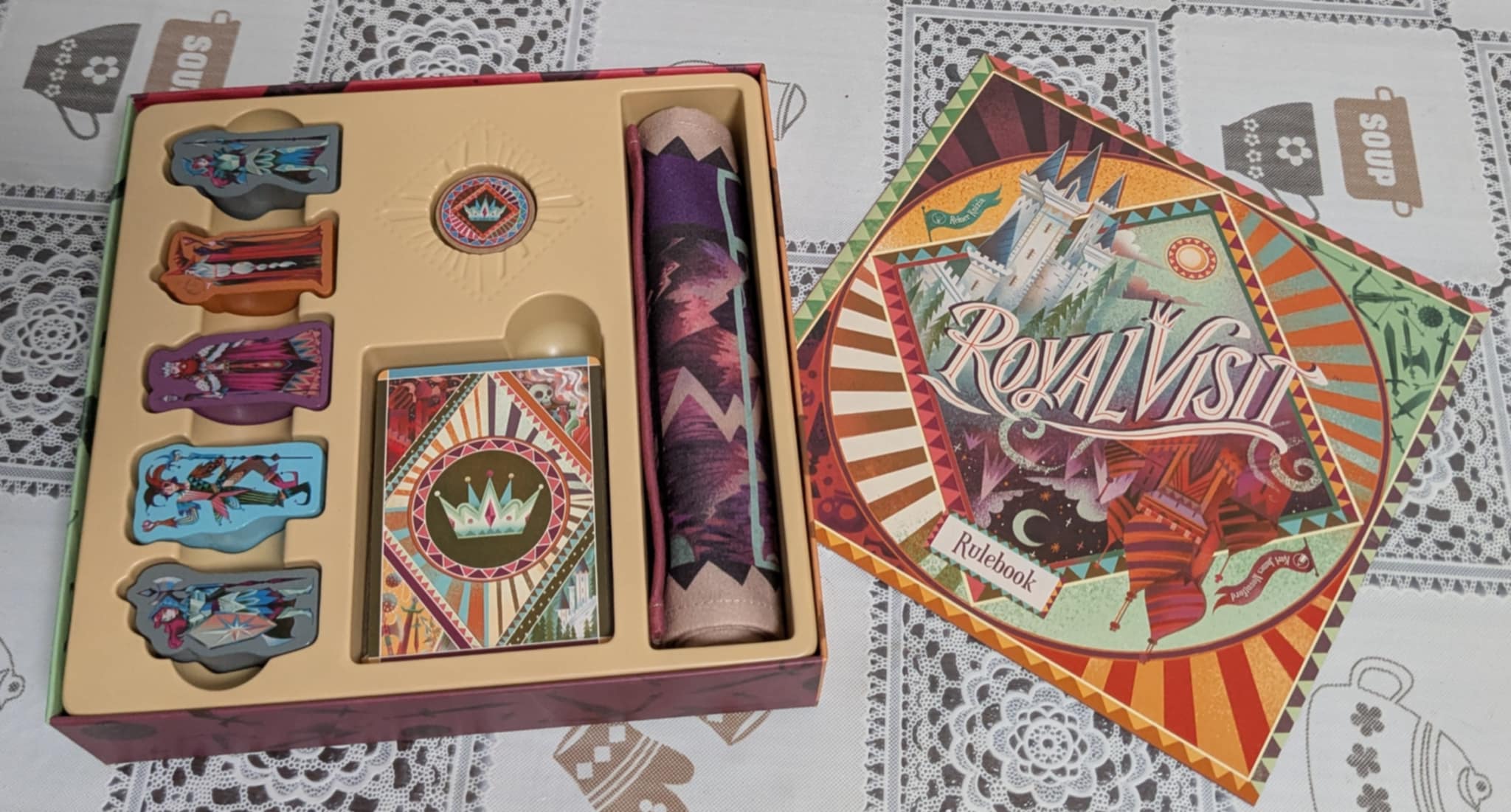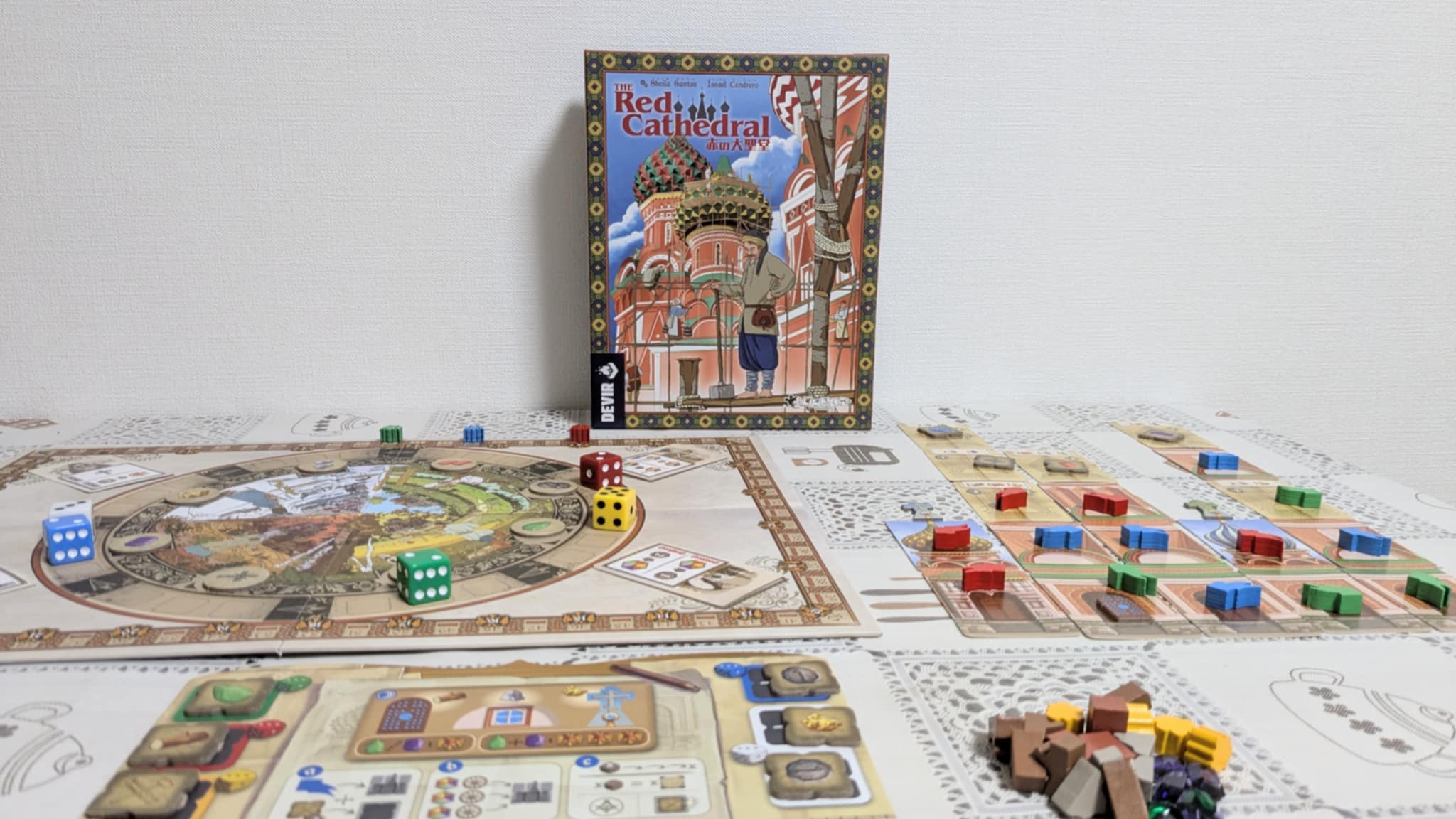Today, we welcome a compact powerhouse of the eurogame world—Oh My Goods! Known to some as Royal Goods, this clever little card game has made a lasting impression with its streamlined mechanics, strategic resource management, and a chain-production system that rewards efficiency and smart timing. Designed by the celebrated Alexander Pfister, the game has gained recognition not just for its gameplay, but for how much strategic depth it offers in such a small box.
What is Oh My Goods!?
Oh My Goods! is a card-driven engine-building board game for 2–4 players, published by Lookout Games. In it, players take on the roles of medieval craftsmen running workshops to produce and convert goods like coal, iron, flour, and glass. Each card serves multiple purposes—it can be a building, a resource, or a good—and players must use them wisely to build their tableau, optimize production chains, and earn the most victory points.
With a playtime of around 30 minutes, Oh My Goods! offers the kind of meaningful decisions and satisfying payoffs you’d expect from a much bigger game. It’s proof that great things really do come in small packages.
- Player Count: 2–4
- Playtime: 30 minutes
- Complexity: Medium
- Mechanics: Card Management, Resource Production, Engine Building
- Designer: Alexander Pfister
- Publisher: Lookout Games
Now, let’s sit down with Oh My Goods! itself and explore what makes this production puzzler so satisfying.
Small Box, Big Eurogame: Oh My Goods! Surprises from the Start
Me: Welcome, Oh My Goods! It’s not every day we get to sit down with a board game that fits in the palm of our hand yet plays like a full-fledged eurogame. Care to tell us about your first impression?
Oh My Goods!: Thank you—it’s good to be here! You’re absolutely right. At first glance, I look like I belong next to 6 Nimmt! or Love Letter. Just a little box of cards with a quaint farming village on the cover.
Me: Yes, the artwork feels like something out of Agricola or Caverna, which is unexpected for something so compact.
Oh My Goods!: That’s precisely what gives me my charm. While I come in a tiny box, I offer a rich euro-style gameplay experience packed with engine building, resource optimization, and clever card management. My size might suggest a light filler game, but I’m proudly more than that. Once players sit down and shuffle through the first few rounds, they often have that “wait a second…” moment—realizing they’re in for something deeper.
Me: So you’re a small box card game that’s secretly a euro board game in disguise?
Oh My Goods!: Exactly! I might be compact, but I embody everything you’d expect from a classic eurogame: chain production, tight resource management, and plenty of satisfying player decisions. My bucolic artwork and pastoral theme might seem simple at first, but underneath it all, I’m a fully-fledged Alexander Pfister engine-builder that stands proudly among bigger board game boxes.
Me: A small footprint with strategic depth—no wonder you’ve become a hidden gem in the board game world.

Oh My Goods’s Secret Ingredient: Multi-Use Cards Done Right
Me: Now I’ve got to ask—how do you pack so much eurogame depth into such a small board game box? What’s your secret?
Oh My Goods!: It all comes down to one elegant trick: multi-use cards. Every single card in my deck carries more weight than it appears. I’m talking about four types of information compactly layered into one beautifully efficient design.
Me: Go on, I’m intrigued. What kind of information are we looking at here?
Oh My Goods!: Each card shows a resource type, a building with its unique production and cost, victory points, and—when flipped—acts as a physical good used to power other buildings. I don’t use coins or tokens. Instead, the cards become goods themselves when placed facedown on buildings. It’s minimalistic, smart, and perfectly suited for my tight design.
Me: That sounds like a lot for one little card. Doesn’t that risk becoming overwhelming?
Oh My Goods!: That’s the beauty of it. While multi-use cards can easily become messy or confusing, I’ve been designed with clarity in mind. My layout is intentional and intuitive:
- All market phase information (resource type and sun symbol) is neatly placed in a box on the left side.
- Building information—such as activation requirements and chain production—is tucked at the bottom.
- Cost and victory points? Right where you’d expect them—on the top edge.
- And yes, the color scheme reinforces everything by matching resource types with building types visually.
Me: So what you’re saying is, while you do a lot with each card, players never feel lost thanks to smart organization?
Oh My Goods!: Exactly. My multi-use card system doesn’t just save space—it enhances gameplay. It creates a smooth learning curve, and once you get going, every draw feels like a new opportunity.
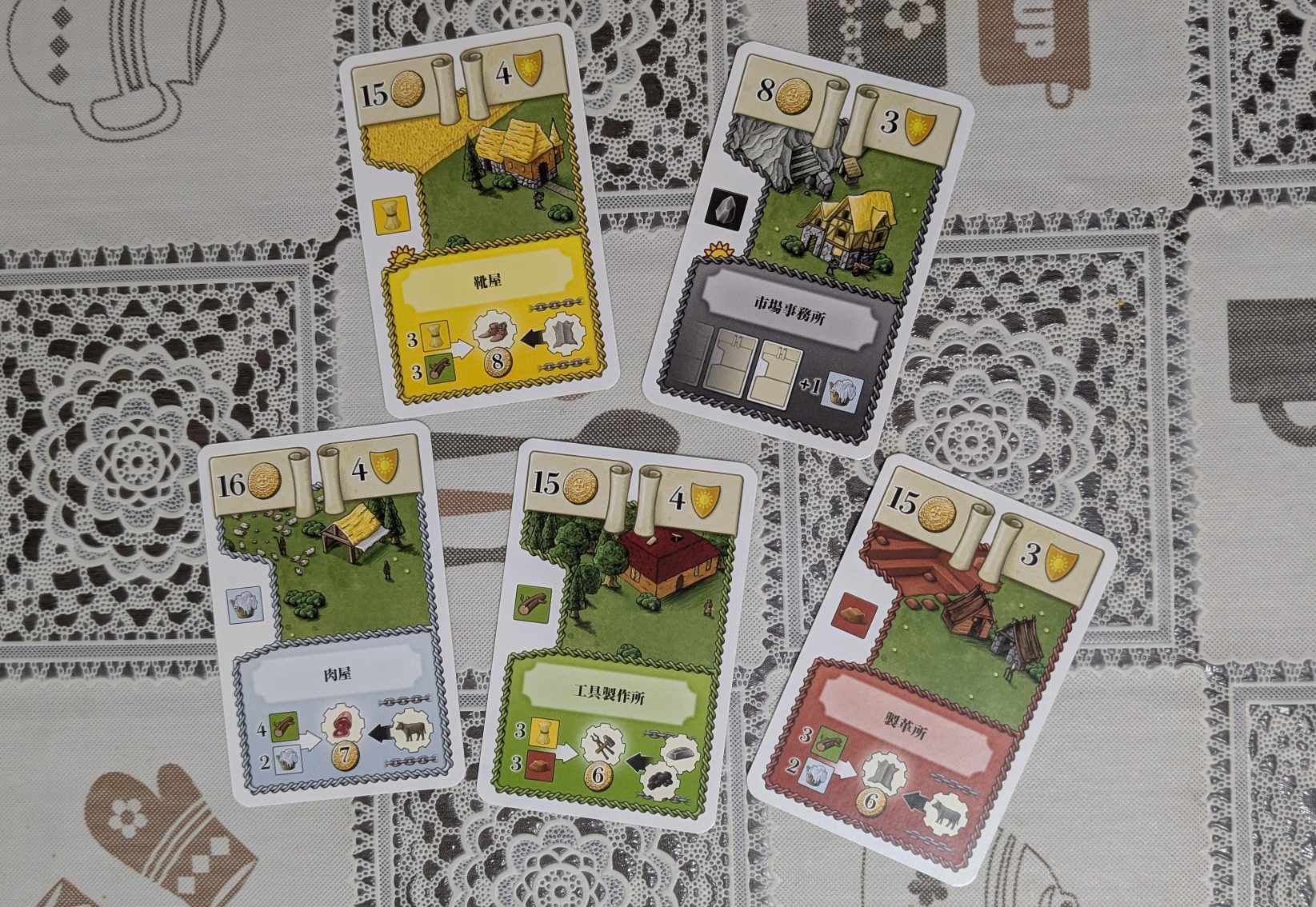
Building a Working Village: The Heart of Oh My Goods!
Me: So all these cards are clearly doing a lot—but what exactly are players doing with them on each turn?
Oh My Goods!: Excellent question. At my core, I’m an engine-building board game that happens to live in a small card box. Each player is essentially growing their own little village economy. They construct buildings that produce goods, convert resources, and ultimately generate points and wealth. It’s your village—built with your choices—and it begins working for you.
Me: And how does this engine actually run during gameplay?
Oh My Goods!: Every round, a few cards are revealed from the shared market. These show the available resources for that turn. Each player then decides which of their buildings they want to try and activate based on what they see—though it’s always a gamble since part of the market is still hidden.
If you succeed, your building produces goods—usually one or two cards face down. But here’s the twist: most buildings have chain production. This means they can transform one type of good into a more valuable one. For example, your woodcutter’s hut might feed into a sawmill, which then produces planks worth more golds.
Me: So it’s like turning raw materials into refined goods—very thematic.
Oh My Goods!: Exactly. It’s strategic, satisfying, and thematic. And to make things even more interesting, I include helpers—special characters who stick with a single building and produce goods there each round. They’re fantastic for grinding out key materials, but they only join you once you’ve met specific requirements—another incentive to keep expanding.
Me: So it’s a game of building, growing, and timing your production?
Oh My Goods!: You got it. My engine doesn’t just run—it evolves. Each decision builds on the last, and while the engine doesn’t always fire at full capacity, your progress is constant. And that sense of momentum? That’s what keeps players coming back.
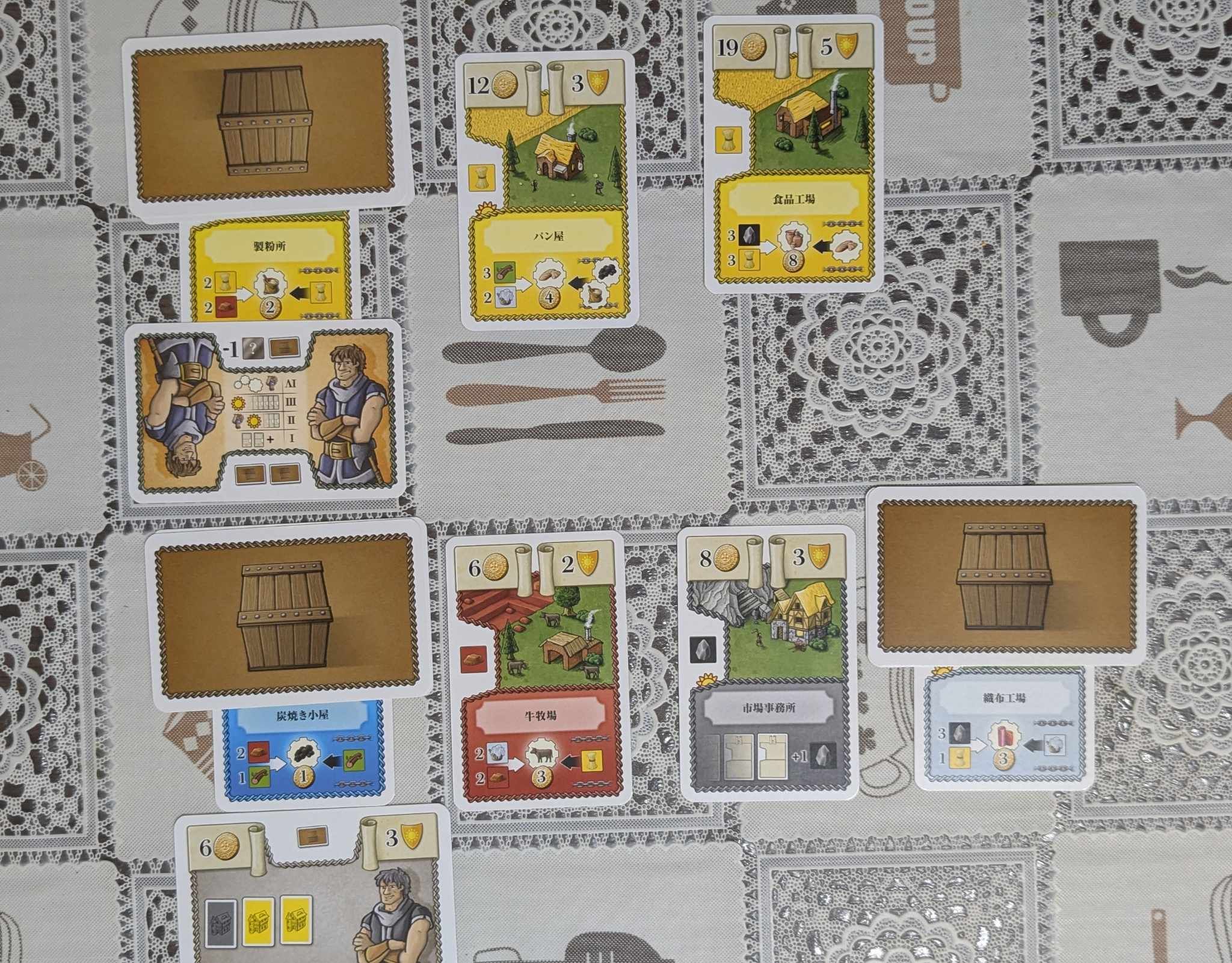
A Gentle Gamble: The Push-Your-Luck Element in Oh My Goods!
Me: Earlier, you mentioned that part of the market is hidden each round. Is that where the risk—and excitement—comes in?
Oh My Goods!: Precisely. It’s not a wild gamble like you’d find in traditional push-your-luck card games, but it introduces just enough tension to make decisions feel weighty. Each round begins with the morning market, where a few resource cards are flipped face-up. At this point, players must decide: will you commit to producing properly, aiming for two goods, or play it safe and produce poorly, gaining just one good but with more lenient requirements?
Me: So you’re placing your bet before all the cards are on the table?
Oh My Goods!: Exactly. After everyone commits, the afternoon market reveals additional resource cards. Sometimes, those afternoon resources will give you exactly what you need—and other times, you’ll be left scrambling.
Now, I admit—on its own, this mechanic might seem rather mild. It’s not thrilling. But what it does is add an important layer of pacing and texture to your village building. Choosing to go big with a risky production can reward you with extra goods—which means more money to build more buildings. But if you fall short, you’ll need to make up the missing resources by spending cards from your hand.
Me: And those cards could be future buildings or chain production materials, right?
Oh My Goods!: Exactly. So even this tiny decision affects your long-term engine development. It’s not a spotlight mechanic—but it makes the whole machine hum a little more sharply. The pressure builds subtly, but meaningfully, round after round.
Me: It’s a small gamble that feeds directly into the bigger picture.
Oh My Goods!: That’s the spirit. It’s a quiet kind of tension—just enough to keep your gears turning.
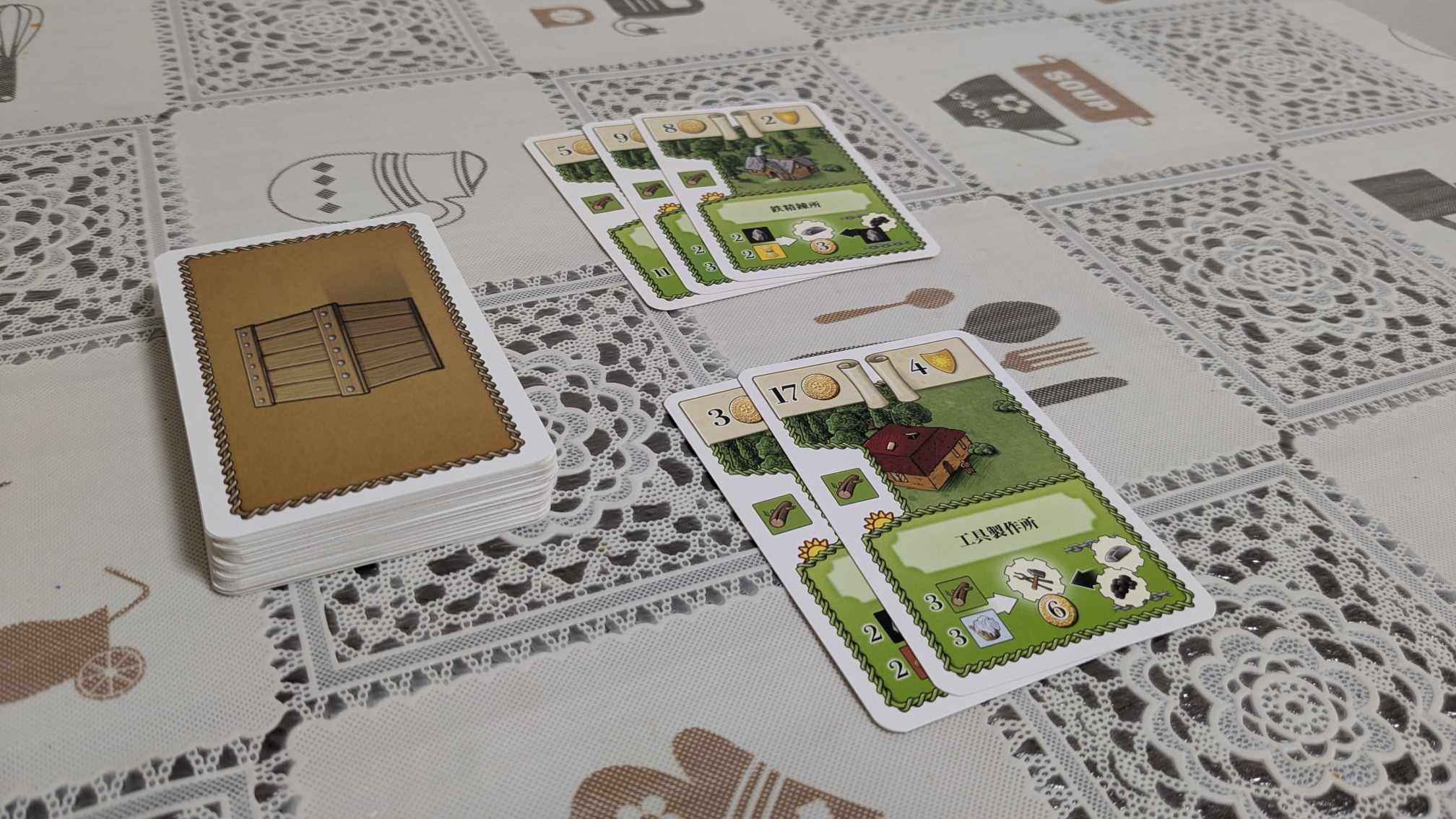
Oh My Goods’ Glorious Finale: Building Toward the Grand Chain Production
Me: You’ve been quite measured so far, but I’m curious—what’s your favorite part of your own design?
Oh My Goods!: Oh! I’m so glad you asked. This is the moment I’ve been waiting for. Let me tell you about one of my proudest, most exhilarating features—the final chain activation.
Me: You seem excited. What makes it so special?
Oh My Goods!: Most tableau-building games follow a familiar rhythm: build a card, run it, build another, run both, and gradually your engine expands and strengthens. But I… I take a different approach.
You see, my engine doesn’t fire every turn. In fact, you’ll spend much of the game building it, tweaking it, and stockpiling resources—all in preparation for one glorious moment.
Me: So it’s not about constant output?
Oh My Goods!: Not at all. I’m a game of patience and planning. You construct a chain of buildings—say, a charcoal burner feeding a smithy, which feeds a toolmaker. Then, when the timing is just right, and your warehouses are full of humble low-value goods—you pull the trigger. One grand, symphonic activation.
Me: That sounds dramatic!
Oh My Goods!: It is! After all that careful setup, the final turns let you unleash your full chain. You convert, upgrade, and compound those goods into something magnificent—massive point swings that feel like fireworks going off in your tableau.
Me: So, it’s all about setting up that perfect cascade?
Oh My Goods!: Exactly. That final chain activation isn’t just a move—it’s a reward. For planning, for building smart, and for seeing the long game. It turns a cozy little village into a precision economic engine. And the satisfaction? Unbeatable.
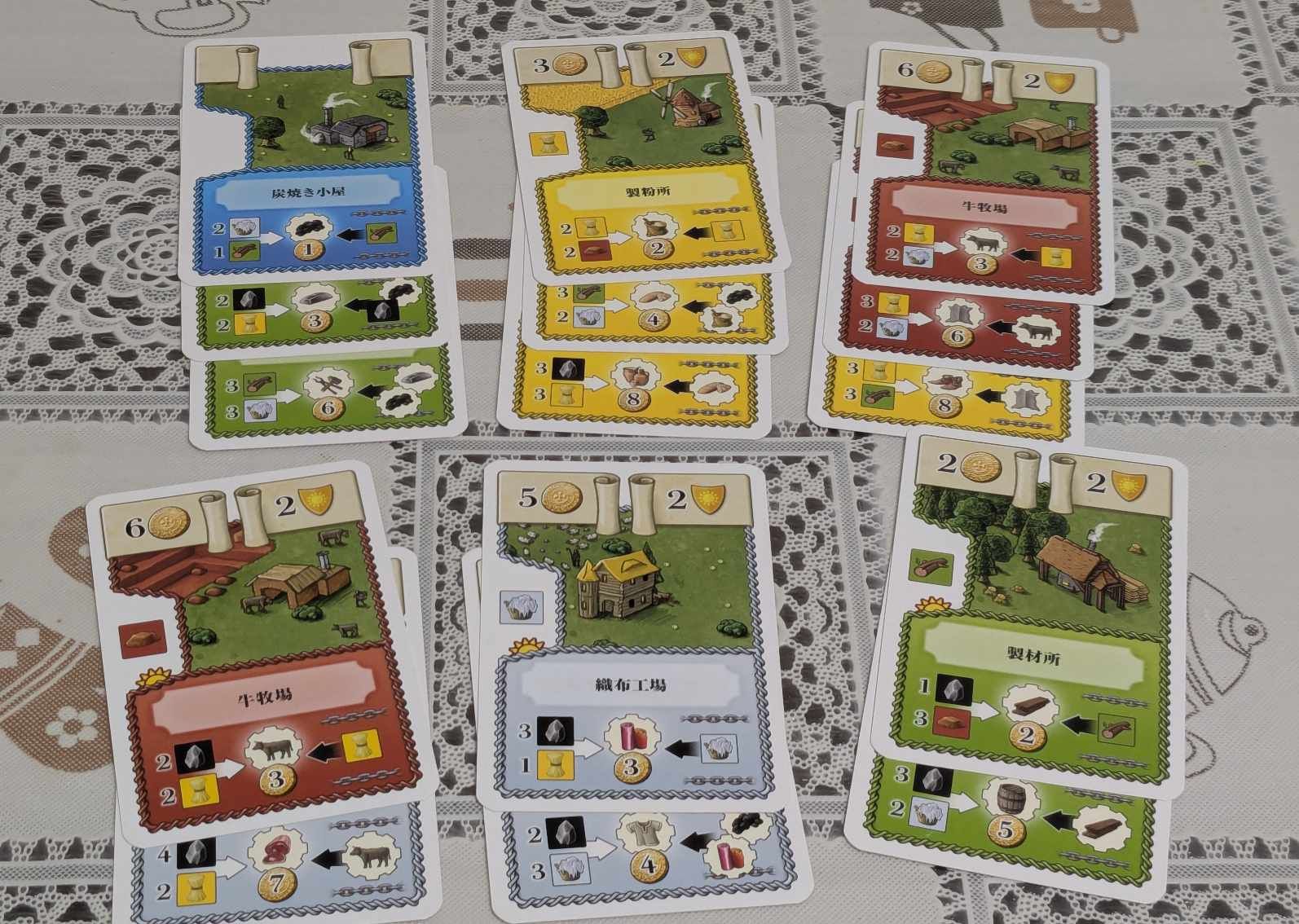
Drawbacks: Oh My Goods and A Little Too Much Chaos in the Cardstock
Me: Let’s talk imperfections. Even the best small-box board games have a few loose threads, right?
Oh My Goods!: Absolutely. I may pack a clever eurogame into a charming little box, but yes—I have my quirks.
Me: And the biggest of those quirks?
Oh My Goods!: Without question, it’s the randomness of the deck. I run on a single shared deck that serves many purposes: buildings to construct, goods to produce, even workers to recruit. The issue is—when players use cards as goods (by placing them face down on buildings), those cards are effectively gone. They’re no longer in circulation. So, that critical card you need to complete your beautiful chain of production? It might never show up. Not because you didn’t dig hard enough… but because your opponent unknowingly buried it in their textile mill.
Me: That sounds brutal.
Oh My Goods!: It can be. Even though I let players mill through cards fairly quickly, there’s no way to know what’s been buried beneath someone else’s production engine. It’s like building a machine with missing parts—and not realizing it until it’s too late. In a game that revolves around planning the perfect chain activation, this can be incredibly frustrating.
Me: Any other bumps in the road?
Oh My Goods!: Well, my game length can vary, depending on how quickly the market evolves and how fast players build. I can overstay my welcome, especially in 2-player games. And while I scale well with simultaneous play, there’s almost zero player interaction. You’re mostly building your own village in parallel with others.
Me: So, not a game for those who want tight control and constant competition?
Oh My Goods!: Exactly. I’m more about cozy engine-building with a dose of chaos. If you’re okay embracing some unpredictability, I’ll treat you to a charmingly crunchy euro experience. But if you need that perfect building to show up? You may be at the mercy of the shuffle… or someone else’s bakery.
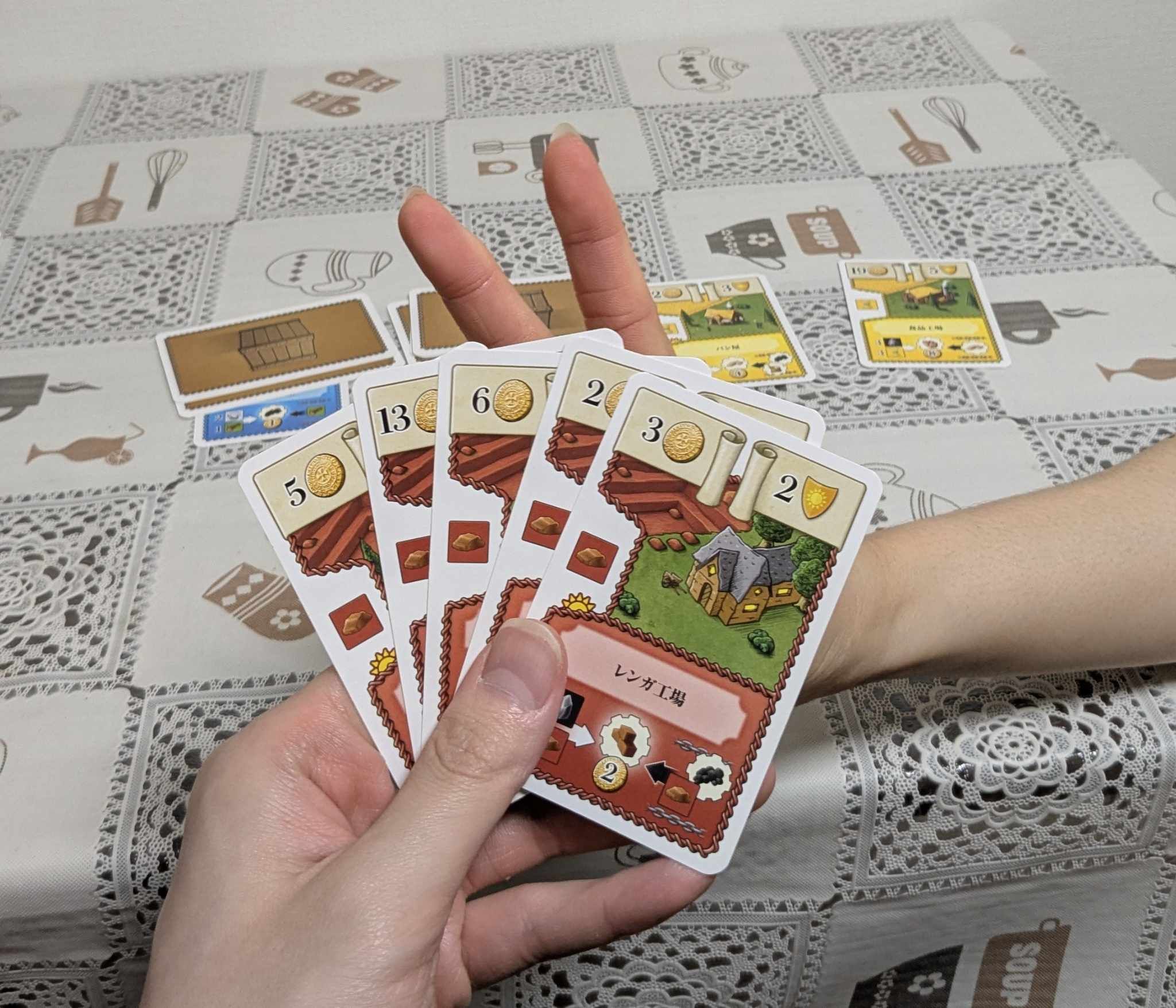
Final Verdict: Oh My Goods! is A Hidden Gem in a Humble Box
Me: Well, Oh My Goods!, thank you so much for joining us. Any final words before we close out?
Oh My Goods!: It’s been a pleasure. I may come in a tiny box, but I carry the heart of a full-fledged eurogame—compact, clever, and quietly powerful. If you’re someone who enjoys building up a satisfying engine, setting up one glorious chain of production, and puzzling through multi-use cards, then I’m absolutely the game for you.
Me: Any advice for new players?
Oh My Goods!: Don’t let the randomness scare you. Embrace it, plan flexibly, and you’ll find immense satisfaction in watching your village click into place. I’m not the game for cutthroat competition—I’m about solving your own economic puzzle, quietly, thoughtfully, and with a hint of risk. If you love interaction, I may not shine as brightly—but if you’re in it for that solo satisfaction in a shared space, you’ll find something truly special here.
Me: I have to say, you’re one of the freshest little euro boxes I’ve seen. A standout in a sea of sameness.
Oh My Goods!: That’s very kind. I may be quiet, but I’ve got staying power.
Me: Well then, thank you again. Here’s hoping more players discover the charm of your quaint little village. Good luck out there in the marketplace, and may your chain productions always run smooth!

Conclusion: A Magical Little Eurogame That Surprises at Every Turn
Oh My Goods! is an underrated hidden gem from Alexander Pfister, the brilliant mind behind Great Western Trail. At first glance, it looks like a small card game—but within its compact size lies a clever and deeply satisfying euro-style tableau builder. Its unique take on engine-building, capped off by one powerful chain production finale, offers a refreshing twist on the genre.
This is a game that proves eurogame elegance doesn’t require a big box. It’s tight, crunchy, and offers a fulfilling puzzle every time it hits the table.
Alternative Recommendations:
For a richer bucolic euro experience with more interaction, try Agricola. Looking for another focused tableau builder? It’s a Wonderful World is an excellent, streamlined pick. Want more emphasis on chain production? Villagers delivers that in a similarly compact form.
Final Rating: 9/10
✅ Pros:
Packs a true eurogame experience in a small, charming box
Innovative, multi-use card system
Satisfying and strategic final chain production
❌ Cons:
Inconsistent game length depending on card flow
High card randomness can occasionally stall plans
Virtually no player interaction
If you enjoy solitary engine building and a well-designed economic puzzle, Oh My Goods! absolutely deserves a spot in your collection.

